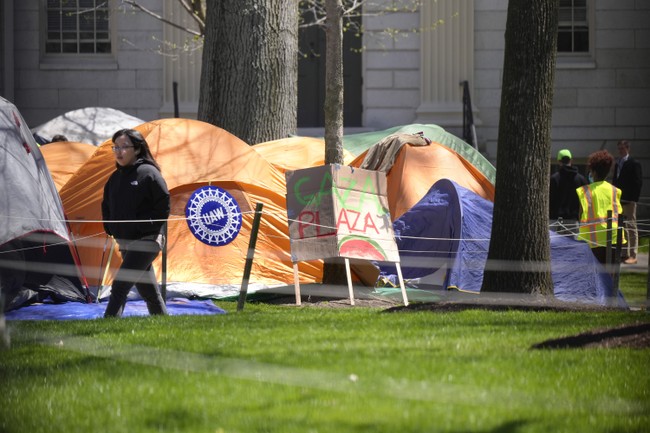Massive Storms Ravage Central U.S.: Unyielding Danger
The relentless barrage of severe weather in the South and Midwest U.S. has left a trail of destruction and fatalities, with many still bracing for continued storms and flooding.
Published April 08, 2025 - 00:04am

Image recovered from washingtontimes.com
The ferocious storm system that recently ravaged the U.S. South and Midwest regions has left at least 16 people dead, spread across multiple states. The relentless succession of tornadoes, flash floods, and high winds devastated the states from Arkansas to Indiana, ensuring a continued state of emergency as communities struggle to cope with the aftermath.
Overnight warnings persist with meteorologists highlighting the potential for further severe weather, including rising waterways anticipated in the coming days. This exceptionally violent weather pattern is a convergence of warm temperatures, an unstable atmosphere, strong wind shear, and abundant Gulf moisture. As these severe conditions persist, impacted states set up warnings and advisories. The forecast includes more tornadoes and destructive weather in a broad swath stretching from Arkansas and Missouri to Kentucky and Tennessee.
The situation escalated throughout the week with new tornado warnings issued overnight in Alabama and Mississippi coupled with flash flood warnings across several Kentucky counties. In one of the hardest-hit states, Tennessee reported 10 deaths, underscoring the disaster's scale and severity. Meanwhile, other states like Kentucky observed critical infrastructure becoming inundated, and the Little River's rising waters forced a significant portion of the state's roads to become impassable.
Amidst the tragedies, there were haunting stories, such as a young boy, nine, swept away by floodwaters as he walked to school, and several train derailments due to washed-out tracks in Kentucky. Missouri also recorded fatalities with a storm-surged area claiming a man's life after strong currents swept his car away.
The impact on daily life was tangible with over 500 flights cancelled nationwide and widespread delays affecting thousands more. Critical transport arteries like Memphis and Louisville, which host major cargo hubs, are pivotal intersections for industry logistics, now significantly hindered by aggressive floods.
Moreover, states ballasted by emergency measures, like Arkansas, which declared a statewide emergency, saw vast destruction to property, personal residences, and a precarious electric grid, leaving some areas powerless. Impact zones like these have struggled with dashed hope as planned recovery continues to face slowdowns from persistent rains.
Locals are urged to evacuate heightened flood risk areas like north-central Kentucky's Falmouth, exposed as its rising river threatens to replicate a disastrous 50-foot crest record from decades prior. In such situations, storm shelters become literal lifelines for locals seeking refuge from the storm's fury. Reports from Dyersburg, Tennessee, depict how communities quickly adapted, utilizing schools and public spaces as shelters for cascading evacuees seeking solace and safety.
The broader impact is all the more troubling, as nearly half of the National Weather Service forecast offices face severe understaffing, reducing their ability to issue timely alerts. The aftermath of recent administrative cuts underlines a worrying trend of diminishing preparedness resources amidst growing storm threats.
Additionally, emergency rescue teams are active around the clock, generously aided by neighboring states and federal agencies, albeit amidst proliferating need. Stakeholders emphasize the increasing urgency of climate change's role in amplifying such natural disasters, making them worryingly commonplace. National and state agencies are actively engaging in post-disaster recovery and rebuilding strategies seeking sustainable solutions to enhance climate change resilience.







